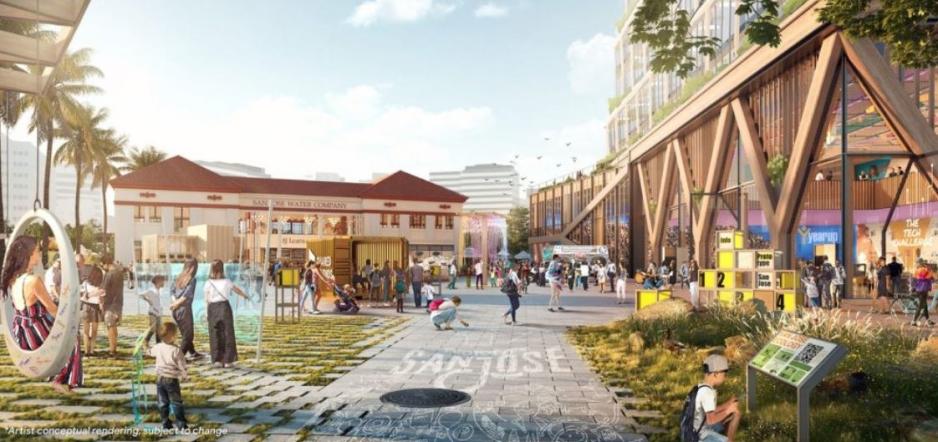Current project feasibility challenges necessitate clear entitlement paths to engage a range of private and non-profit partners and successfully deliver healthy, connected, prosperous, and equitable transit-oriented development (TOD). Projects that meet community, agency, and jurisdiction needs require a tailored mix of uses which may complicate proforma exercises, but when well-executed, offer the benefits of walkability, local amenities, increased access to areas of opportunity, and long-term community benefits. Accordingly, detailed market analyses for clearly enumerated combinations of land uses, including critical affordable housing, are essential to project success.
Infrastructure and material costs alone can deter development, even if land basis minimizes financial risk to developers. Elements such as utilities may be in place, but they are often undersized for handling the scale of new development. Project financing, especially when below-market components are included, needs to complement gap financing for infrastructure to enable project delivery.
Due diligence for sites near transit often reveal compromised environmental conditions, especially in areas transitioning from prior industrial uses entitled and discontinued without benefit of soil investigations. The need for mitigation of both pre- and post-construction onsite conditions, combined with unique and complex financing challenges, highlights the importance of a highly coordinated public-private partnership. This coordinated approach ensures that TOD infill can be financially feasible while still complying with local policies/standards and State regulations and create new destinations at VTA's transit hubs.
Joint Development
Promote joint development or cost-sharing opportunities by welcoming private development partners through appropriate incentives and by advertising that TOD projects are most feasible when design and construction experts team with transit agency representatives.
Casting a Wide Net
Engage known local entities and look beyond traditional sources for development partners, potentially those experienced with local communities and populations, that can offer targeted relevant experience, even if they may not yet have operated at large scales or in the same political contexts.
Quantifiable Components of Mixed-Use
Clearly articulate the uses proposed for a particular site, since jurisdictional mixed-use zoning tends to promote different combinations of uses in various locations.
Innovative Market Analyses
Implement constituent-driven, data-informed market analyses to meet the demand for specific uses in transit-rich locations and provide assurance that the development program will result in net revenue or at least revenue neutrality for the jurisdiction.
Apportioned and Mitigated Risk
Build certainty into the process of advancing a project from consideration into proposal, then financing and construction, by identifying feasible and low-risk incremental milestones.
Value Capture Baseline
Promote appropriate project valuation based on increased zoning capacity and reduced transportation costs for occupants due to proximity to transit.
Special Taxes and Assessments
Consider special taxes and assessments to include value capture strategies that convert a portion of developer profit into public benefit.
Equitable Development Incentives
Encourage development projects that include affordable or below-market rate housing near transit to provide low-income residents with achievable housing options near transit and to mitigate potential displacement.
Community Collaboration and Preservation
Non-profit, neighborhood, and other community-based organizations can help integrate community concerns and create a balance of uses that support the neighborhood while still meeting local jurisdiction objectives.
Environmental Regulations
Ensure that project proposals and joint-development procedures will meet requirements for minimizing or avoiding potential environmental impacts pursuant to CEQA.
Case Studies
- Clarendon, Arlington, Virginia, USA - Clarendon Metro Station Urban Village
- Austin, Texas, USA – Plaza Saltillo, Community Benefits
- San Francisco, California, USA – Transportation Resources to Support Equitable TOD
